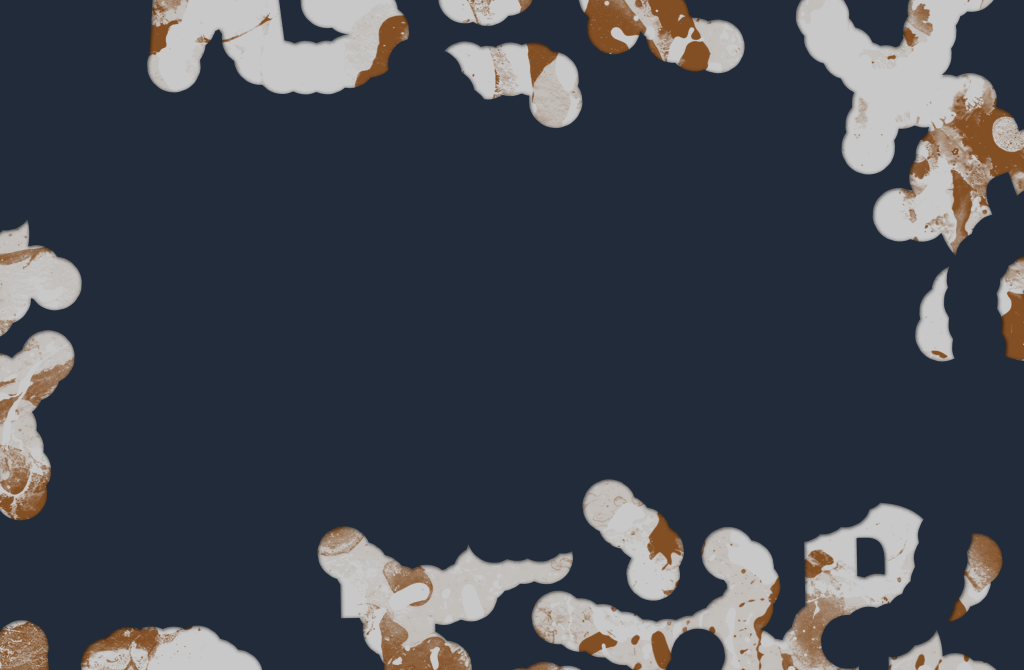TAB x Thermory
TAB 2022 main partner is Thermory – the world’s biggest manufacturer of chemical-free thermally modified wood with significant projects in 50+ countries worldwide. They create real wood solutions that shape a valuable and sustainable living environment. Their selection includes exterior and indoor cladding, decking and flooring, and sauna materials.
We asked Andres Kangur, the Head of Marketing at Thermory why they have decided to support Tallinn Architecture biennale and how important is sustainability for Thermory.
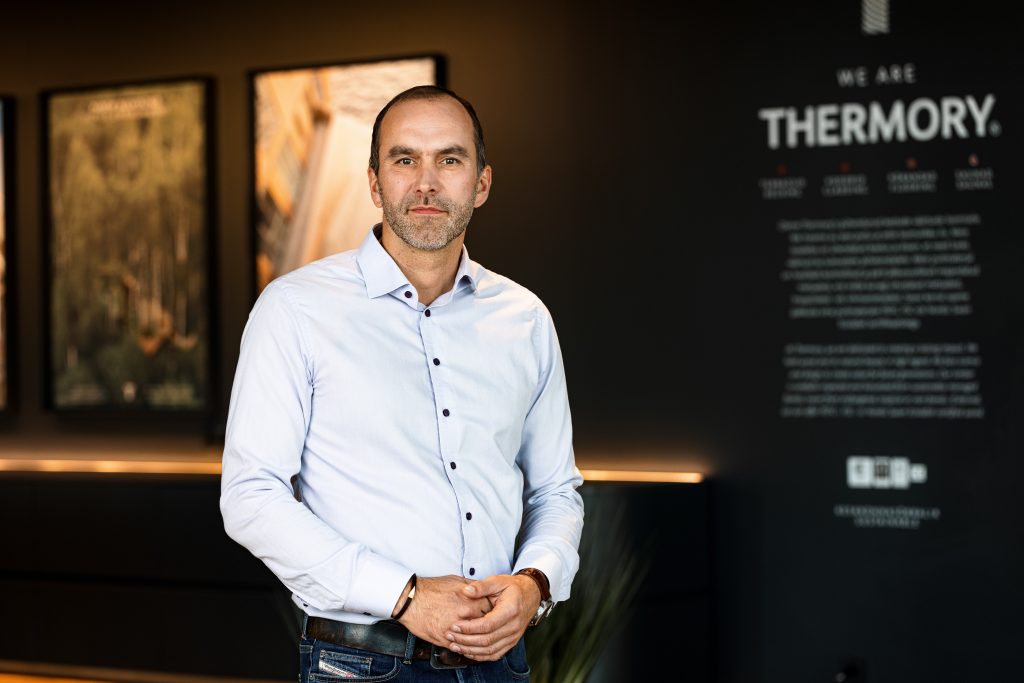
Why Thermory has decided to collaborate with TAB 2022?
Thermory works with architects globally and as a forward-thinking company we want to be part of the conversation shaping the future of architecture. Therefore, it was only natural for us to get involved and support TAB as a key event and platform in our region. We already supported TAB2019 and this was a very positive experience for us, working with an engaged and passionate team of architecture experts and enthusiasts.
What kind of memorable memories you have from previous biennales?
The main highlight of last TAB event was implementing the Steampunk project with a group of international architects. The team used innovative virtual reality technology to demonstrate how construction projects can be implemented in the future. The resulting structure was erected just outside the Museum of Architecture in Tallinn, using Thermory materials. It is great to see that this structure is still standing and has withstood the test of time during the past 3 years.
How Thermory is using circular economy principles in the company’s philosophy?
Sustainability is at the core of our business strategy, and we have a clear roadmap with many initiatives in place for the future ahead.
Firstly, we make sure that all the wood we source comes from partners that apply sustainable forestry practices and are certified by third parties like Nordic Ecolabel, PEFC or FSC. Our supply chain is diverse and truly international, we work best with suppliers from Scandinavia, Europe, America and as far as New Zealand.
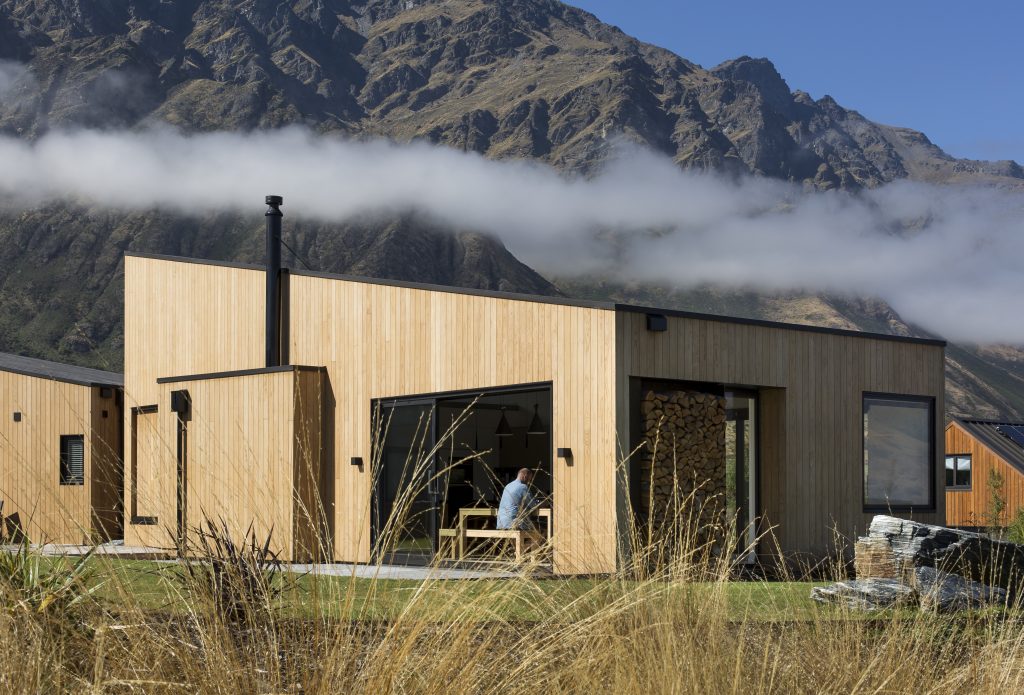
Since nearly 25 years Thermory has been investing in thermal modification technology, which is the cornerstone of our business and is reflected in our name. This is a sustainable technology, where wood is modified through only heat and steam, applying no chemicals or plastics, that many alternative solutions use. In such a way, more durable, high-value products are created that leave a better impact on the environment in the long run.
Recently we have invested significantly in our factories making this technology more resource efficient. Our new Jartek thermo-kilns are designed to use less energy. All the kilns are placed indoors, which is heated using residual heat from the kilns. This also allows us to shorten the heating cycles: the material is pre-heated and does not need so much cooling at the end of cycles. The whole process produces significantly less CO2 emissions and is environmentally safe. Escaping wood gases are burnt in burners and we release only clean air and moisture to the outside environment.
Furthermore, as a team we keep looking for possibilities to use as much of the wood as possible in our manufacturing process. We work with designers and partners to create innovative products and solutions from residual wood, that is left over from our main process. Examples of that are our modular QuickDeck and Herringbone products for terrasses, design sauna models under Auroom brand, assortment of sauna products like benches or doors, and also cool designer products Extery park benches or SUvalgus illuminated flowerpots, that our partners make using our products.
Last year Thermory joined a national sustainability initiative Rohetiiger (Green Tiger), with objective to create a roadmap and structure around our sustainability activities and product innovation. This year our teams are participating in a 9-month academy program to successfully embed these development principles into our everyday life.
How great design and well-selected materials can improve our urban environment?
Great architecture is both aesthetically pleasing and functional. But as climate change is a more and more pressing issue, sustainability must also be included in the mix.
Wood is a versatile, truly natural, and renewable construction material. It has a much lower carbon footprint than other building materials such as concrete and steel. Each cubic meter of wood binds a ton of greenhouse gas and the more wood we use in buildings, the less CO2 the atmosphere needs to deal with.
A good example of how design and materials can improve the urban environment is the pine-clad Powerhouse Telemark by Snøhetta. It is a co-working building in Porsgrunn, Norway designed to be carbon negative and produce more energy than it will consume over a 60-year lifespan.
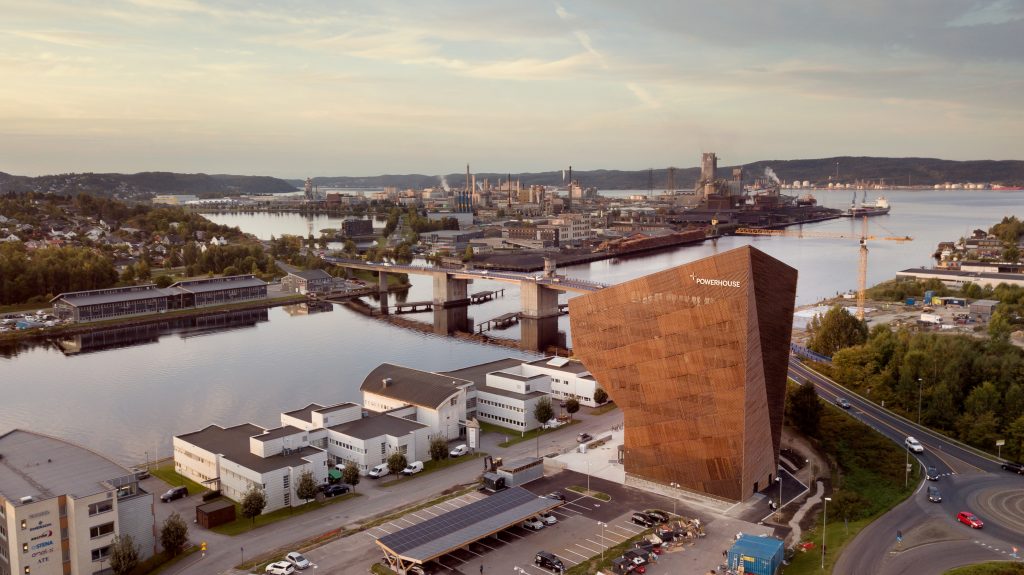
Another example is the Waterfront residential complex in Stavanger by AART architects that truly showcases the natural beauty of wood. They have used thermally modified pine that is left untreated – this means that the cladding will turn gray over time, no chemicals are used, no maintenance is needed. Wood enhances the modern architecture of the building and creates an accommodating urban atmosphere.
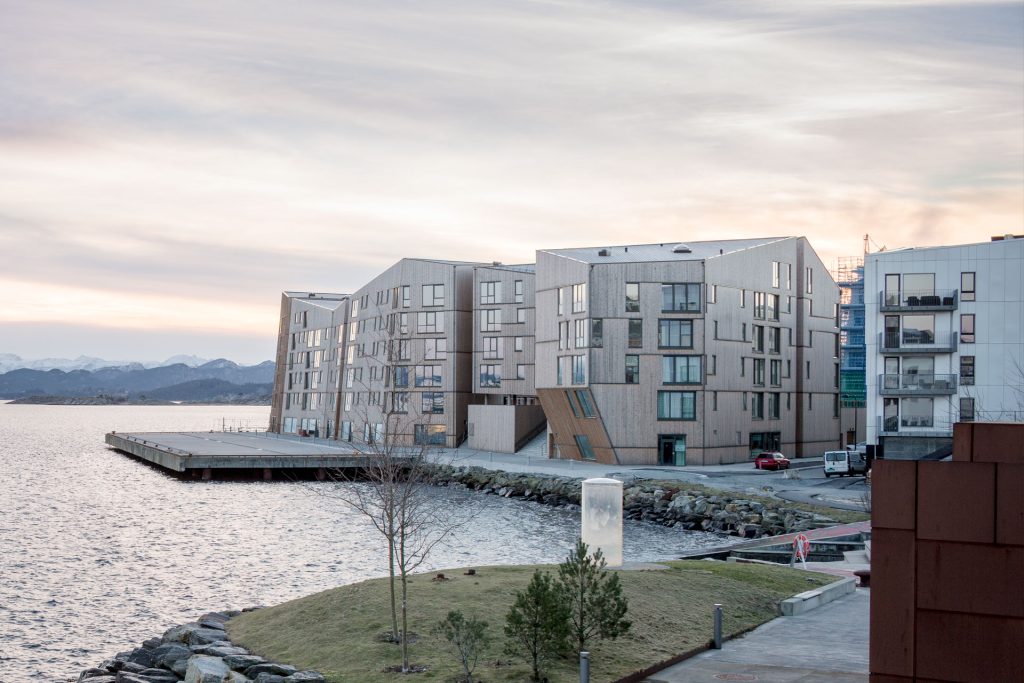
Thermory promotes using real wood products to bring nature closer to people in urban, workplace and home environments. Wood can be used as the main signature element in exteriors as well as an integral part of any interior design solution. We have a wide selection of wood species and profiles for architects and designers to select from, and are happy to advise our clients during the design phase and throughout implementation.
How Thermory is using by-products and what can others learn from you?
Our focus is on educating our clients to make the most of the resources we have. Some examples of sustainable material ulilization are:
• We promote the use of shorter board lengths for cladding.
• We have created Tiles and Décor interior product series, Herringbone, and QuickDeck decking modules to utilize short lengths. Also, smaller pieces of wood are used for creating sauna elements and glulam.
• Currently working on how to make use of even smaller “leftovers”, lengths under 0,5m.
It is a journey, an ongoing process and we have still a lot to do but we have always kept in mind that the value of wood should not be discounted at any stage of the product development or production process. From the practical side, we can say that designers should be involved in the product development process early in the beginning. Also, you don’t need to do everything by yourself – we sell our leftovers for other companies that create beautifully designed products out of them.
